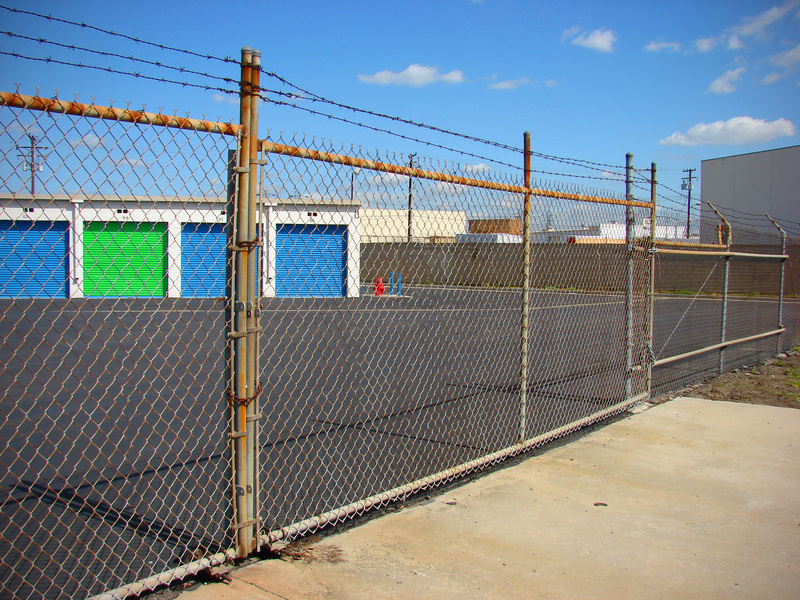The Complex Art of Piano Moving: Trust the Experts
Posted on 21/06/2025
The Complex Art of Piano Moving: Trust the Experts
Piano moving is far from being a simple household task. The intricate mechanics, significant weight, and delicate nature of pianos make them some of the most challenging items to relocate. This is why professional piano movers exist, offering specialized services to ensure the instrument's safety and integrity throughout the moving process. In this comprehensive guide, we will explore the art of piano moving, why trusting the experts is paramount, and what you need to know before hiring a piano moving company.
Why Pianos Are Exceptionally Difficult to Move
Pianos are more than just musical instruments; they are works of art and feats of engineering. Whether it's a grand piano, baby grand, or upright piano, their size, weight, and fragile inner mechanisms demand specialized knowledge and equipment for moving.
Key Challenges in Piano Moving:- Weight: Most pianos weigh between 300 and 1,400 pounds, with grand pianos on the upper end of the spectrum.
- Size and Shape: Pianos are awkwardly shaped, with protruding legs, pedals, and sensitive keys.
- Internal Delicacy: The instrument's action (its internal mechanism) contains thousands of parts, many of them easily damaged by rough handling.
- Surface Finish: The exterior is often made from expensive wood and polished to a high gloss that scratches easily.
Without proper care, an improper move can result in costly damage, both cosmetically and internally. This is why the task should never be underestimated or handled by amateurs.
The Different Types of Pianos and Their Moving Needs
Understanding the type of piano you have is crucial when planning a move. Each variety--from uprights to grand pianos--presents different challenges.
- Upright Pianos: These generally weigh between 300 and 800 pounds. Their vertical design makes them easier to transport but not without risks, especially for higher-end models.
- Grand and Baby Grand Pianos: These range from 500 to 1,400 pounds and require disassembly, including removing the legs, pedals, and lyre to move them safely.
- Digital Pianos: While usually lighter, digital pianos can still have complex electronics that demand careful handling.
Each piano type requires tailored techniques, specialized tools, and different packing materials to minimize risks.

The Importance of Hiring Professional Piano Movers
Moving a piano is not just about muscle power; it demands skill, experience, and the right equipment. That's why expert piano moving companies exist--to ensure the highest level of care and professionalism.
Why Trust the Experts With Your Piano?
- Experience: Professional piano movers have years of specialized training. They know how to navigate tricky spaces, tight corners, and narrow staircases while keeping your piano safe.
- Proper Equipment: From piano dollies and lifting straps to custom-built padded covers, professional movers use the right tools to handle every piano type.
- Insurance and Peace of Mind: Most reputable piano moving companies are insured. In the rare event an accident happens, your valuable instrument is protected.
Attempting to move a piano without professionals can result in:
- Scratched or gouged wood
- Broken legs or pedals
- Internal mechanical damage
- Risk of personal injury due to the piano's immense weight
How Experts Move a Piano: Step-By-Step Process
Knowing how professional piano movers approach the task can give you peace of mind and better appreciation for the intricate process.
-
Assessment
The movers will inspect the piano, evaluate its size, determine its make/model, and assess the challenging aspects of the move, including stairs, doorways, and tight spaces. -
Preparation
The piano is prepared for the move. This includes wrapping in padded blankets, securing the lid and keys, and possibly disassembling some parts. -
Disassembly (if needed)
For grand or baby grand pianos, the legs, pedals, and lyre are carefully removed, packed, and labeled for reassembly. -
Lifting and Loading
Movers use specialized dollies and ramps to transfer the piano safely, minimizing vibration and shock. Precision and coordination are crucial, especially on stairs or uneven surfaces. -
Transportation
The piano is loaded into a climate-controlled, air-ride-equipped vehicle to ensure gentle transit. Straps and anchors are used to prevent shifting. -
Unloading and Reassembly
At your new location, movers carefully reverse the process, reassembling any dismounted parts and making sure the instrument is positioned exactly where you need it.
The entire process is carried out with extreme precision, ensuring no part of your cherished instrument is left to chance.
Why Regular Movers Aren't Enough for Pianos
While traditional moving companies may excel at shifting couches and boxes, pianos pose unique risks. Even a minor mishap can result in thousands of dollars in repairs or, in extreme cases, render a piano irreparably damaged. Dependable piano moving specialists eliminate these risks.
Costs Associated With Piano Moving
Cost is often a concern for anyone needing piano moving services. While the price is higher than general item relocation, the cost reflects the care, skill, and equipment required.
Factors Influencing the Cost:- Piano type and size
- Moving distance (local vs. long-distance)
- Complexity (stairs, narrow halls, disassembly requirements)
- Special handling for antique, heirloom, or high-value pianos
The average range for a local upright piano move spans from $150 to $500. For grand pianos, moving costs can climb from $400 to $1,200 or more, especially for long-distance or challenging moves.
While the investment may seem steep, it protects the often substantial financial--and sentimental--value of your instrument. Expert piano movers offer peace of mind that mere muscle cannot match.
What to Look for in a Piano Moving Company
Not all companies are created equal. To ensure your piano is in the safest hands, consider these essential factors when choosing a piano moving service:
- Experience: Verify the company has a proven track record with the specific type of piano you own.
- Insurance: Ensure full value protection is available in case of accidents.
- Specialized Equipment: Confirm they use heavy-duty dollies, padding, and climate-controlled trucks.
- References and Reviews: Check online testimonials and ask for references to gauge customer satisfaction.
- Transparent Pricing: Get a clear, written quote that outlines all charges.
Don't hesitate to ask the company about their process, credentials, and previous projects with similar pianos. True professionals will always be happy to provide details and answer your questions.
Preparing Your Piano for a Move: Tips from the Experts
While piano movers handle the heavy lifting, there are steps you can take to prepare your piano (and your home) for their arrival:
- Clear a Path: Move furniture and obstacles from the piano's path before the movers arrive.
- Protect Floors: Lay down protective covering in high-traffic areas to avoid scratches or dents, especially on wood or tile floors.
- Inform Movers: Alert your movers about tight corners, low ceilings, or any known obstacles in advance.
- Remove Decorative Items: Take off any pictures, lamps, or valuables from surrounding areas to prevent accidental damage.
- Communicate Placement: Decide and share with the movers exactly where you want the piano placed at your new location. This will help them plan their reassembly strategy.
By making these preparations ahead of time, you streamline the move and safeguard both your home and instrument.
Common Myths About Piano Moving
Despite the risks involved, several misconceptions surround piano relocation. Let's debunk a few:
-
"A group of strong people can move a piano."
Without training and equipment, brute strength alone is a recipe for disaster, risking damage and injury. -
"All movers can handle pianos."
General movers may lack the expertise for the instrument's mechanics and delicate parts. -
"Pianos are durable."
Cosmetic surfaces and internal components can be irreparably damaged if handled incorrectly, even during a short move.
Trusting the experts is simply non-negotiable for anyone who wants to maintain the beauty, sound, and value of their piano.

After the Move: Essential Steps for a Healthy Piano
Even under the best care, moving a piano can affect its tuning and regulation. Here's what to do once your piano is safely in its new home:
- Let the Piano Rest: Give the instrument at least 2 weeks to acclimatize to the new environment's temperature and humidity before re-tuning.
- Schedule Tuning: After resting, hire a professional tuner to restore the piano's pitch and optimum sound quality.
- Monitor Humidity: Keep the piano in a stable climate, away from direct sunlight, radiators, and exterior doors.
- Examine for Damage: Check for surface scratches or mechanical anomalies. Report any issues to the moving company promptly.
Regular maintenance will ensure your piano continues to play beautifully for years to come, even after relocation.
Conclusion: The Power of Professionalism in Piano Moving
Pianos are not just furniture--they are treasured investments and often family heirlooms. The complexity of their construction and immense delicate value demand that you trust only the experts for piano moving services.
Whether you're moving across town or across the country, never compromise on quality and expertise. The expense of hiring a reputable piano moving company pales in comparison to potential repair costs--or the loss of a beloved instrument. When it comes to the art of piano moving, expertise is everything.
Ready to move your piano? Seek out a dedicated, insured, and experienced piano moving service for peace of mind--and let your treasured instrument make beautiful music for generations to come.



